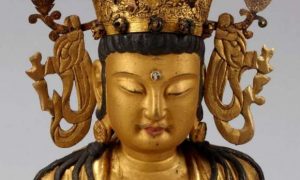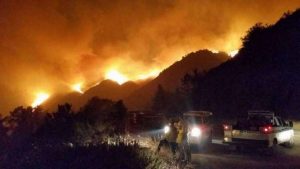
The title of my article was posed as a question in the Commentary of the Contemplation Sutra, written by Master Shandao, the de facto founder of the Pure Land school in China. The answer is stated as follows:
“It is a realm of rewards, not a realm of transformation. How do we know? As the Common Nature of Mahayana Sutra states, “Amitabha Buddha is a Buddha in reward body and his Land of Peace and Joy in the west is a realm of rewards.” He further referred to the Infinite Life Sutra and the Contemplation Sutra and confirmed that Amitabha Buddha is a Buddha in reward body, and of course, he can be manifested in a transformation body as well.
Despite the fact that all Buddhas have a threefold body – dharma body, reward body and transformation body – if a Buddha achieves his supreme Enlightenment in the Pure Land (a realm of reward, like the Land of Bliss), he is called a Buddha in the reward body, and if a Buddha achieves his supreme Enlightenment in the defiled land (a realm of transformation, like our world, the Saha World), he is called a Buddha in the transformation body.
Whether a Buddha prefers to achieve his supreme Enlightenment in the Pure Land or in the defiled land, it is at his own discretion, dependingon his own individual vows. Therefore, Shakyamuni Buddha is a Buddha in a transformation body, and he is the Buddha of the Saha World, where we live. Amitabha Buddha is a Buddha in a reward body, and he is the Buddha of the Land of Bliss.
Due to the limited capacity in vision, we cannot see the Buddha in the reward body, but only see the Buddha in a transformation body. Strictly speaking, it is more appropriate to say that a Buddha will appear in the form of a transformation body, in order that we ordinary beings can see him,
Since all Buddhas have a threefold body, they are free to appear in any body in the respective land whenever necessary. In other words, as a Buddha in a transformer body, Shakyamuni Buddha appears before us in the form of a transformation body, but he also has his reward body in a realm of reward too. It is recorded in the Nirvana Sutra that Shakyamuni’s realm of reward is called ‘Invincible World’ to the west of our Saha World.
Similarly, as a Buddha in the reward body, Amitabha Buddha can appear before us in the form of a transformation body. In fact, many people claim that they have seen Amitabha Buddha in dreams, in contemplation, or in some miraculous incidents. What they see by vision or in the dream is actually Amitabha Buddha in a transformation body. Not until we are reborn in the Land of Bliss with our lotus flower blossom in a realm of reward, can we see Amitabha Buddha in a reward body.
Master Shandao concluded that a Buddha in a reward body or in transformer body is basically the same. It is similar to the two sides of a coin, depending on which side we see it. If we consider Amitabha Buddha as a result of his causal cultivation to complete and accomplish the Land of Bliss, we call him ‘a Buddha in a reward body’. If we consider Amitabha Buddha as a result of his achievement in Buddhahood to deliver all sentient beings, and he appears before us, we call him ‘a Buddha in a transformation body.’
Given all the names of different bodies of the Buddhas, all Buddhas have only one common goal, that is to deliver all sentient beings in the ten directions from suffering and attain ultimate purity through all kinds of expedient means of deliverance.
Most Mahayana patriarchs deny the Land of Bliss is not a realm of reward because they have a question in mind: This Buddha and his Land is said to ‘Reward’ ones. The Reward Land is so profound and wonderful for Theravada practitioners are difficult to reach. How can ordinary people with the obstructions in defilements enter?
Master Shandao gave a simple answer to this question: Taking into account of the obstructions in defilements, ordinary beings are really difficult to clinch on [the Reward Land]. It is because of the Buddha’s vow [power] as strong causal condition, so that all beings in Five Vehicles can enter together.”
The set of Q and A is extremely important because it is a scriptural evidence to prove one of the main characteristics of Pure Land Buddhism in Shandao tradition: rebirth of ordinary beings in the Pure Land’s realm of rewards. It clearly states that ordinary people with the obstructions in defilements can enter Pure Land’s realm of rewardsbecause of the Buddha’s vow [power] as strong causal condition / augmentative cause. Moreover, it also reveals two important points:
(1) Practitioners must entrust themselves to the power of Amitabha’s vow as an augmentative in order to be reborn in the wonderful and profound realm of reward, the Land of Bliss, as stipulated in Amitabha’s 18th vow. With the power of Amitabha’s vow as an augmentative cause, there is no other way that ordinary beings can be reborn in the Land of Bliss.
(2) Not only ordinary human beings, but the other four vehicles, such as Bodhisattvas, Prateyabuddhas, Arhats, and the celestial beings are to be reborn in the Land of Bliss in the same way. All are equal with no discrimination.






